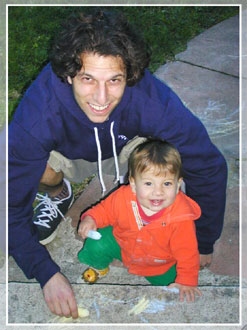Noah Goldstein was awarded second place in the Student Paper Competition sponsored by the Spatial Analysis and Modeling (SAM) Specialty Group of the Association of American Geographers (AAG) in Chicago this month. This is the third year in a row that a UCSB Geography grad has taken one of the top three honors in this competition: Eun-Hye (“Enki”) Yoo and Richard Middleton won first and second place, respectively, for their entries at the Annual Meeting in 2005, and Nicholas Nagle tied for first place in 2004.
Noah’s paper, “A new methodology of comparing Monte Carlo binary output of spatial spread models,” cites “Spatial Metrics, Monte Carlo, and Urban Growth Modeling” as key words in its abstract:Complex System Modeling, as well as many forms of Spatial Modeling, uses the Monte Carlo method to simulate distributions of model results. There is no question that repetition of a model, especially one with stochastic components, lends insight into the model and systems it represents. But the component of Monte Carlo iterations that is seldom questioned is, “How many iterations are sufficient to represent the diversity of model output?” While this may seem simplistic, answering this question can guide Complex Systems Modeling from the theoretical into the applied domain by including transparency for stakeholders and model users. This work explores the development of metrics for measuring the value of Monte Carlo iterations of spatial models with binary outputs. Starting with a cartoon theoretical simulation, the metric is then applied to the SLEUTH Urban Growth Model, but it could be applied to any binary model, such as a wildfire spread model, a river flood model, or change detections from Remote Sensing analysis. The metric, the MCAWS metric, allows the comparison of models of different types and Monte Carlo iterations. Specifically, the metric allows the assessment of the “diversity” of model output with respect to spatial extent and spatial placement.
Noah got his PhD in December and is currently at the Lawrence Livermore National Laboratory as a post-doc, “working on a number of projects from Energy to Wildfires.” He lives in Oakland with Jenny, his wife, and Isaiah, who just turned one year old. He says “I think we will be in the Bay Area for a while”—but, as for his cash prize, he also said “Vegas, here I come!” Hopefully, his expertise with the Monte Carlo method will pay off in more ways than one!


